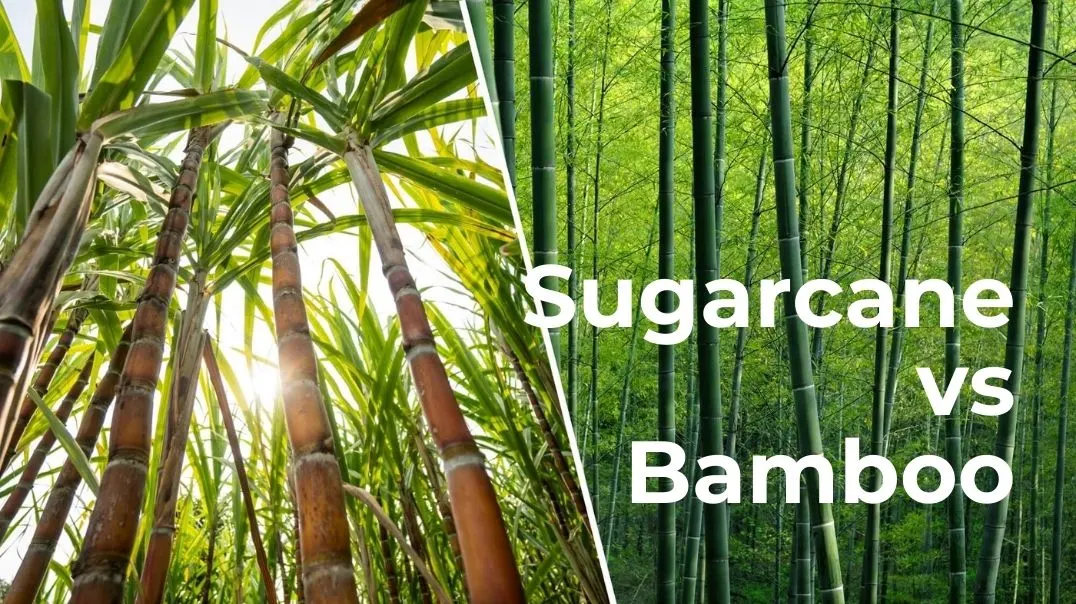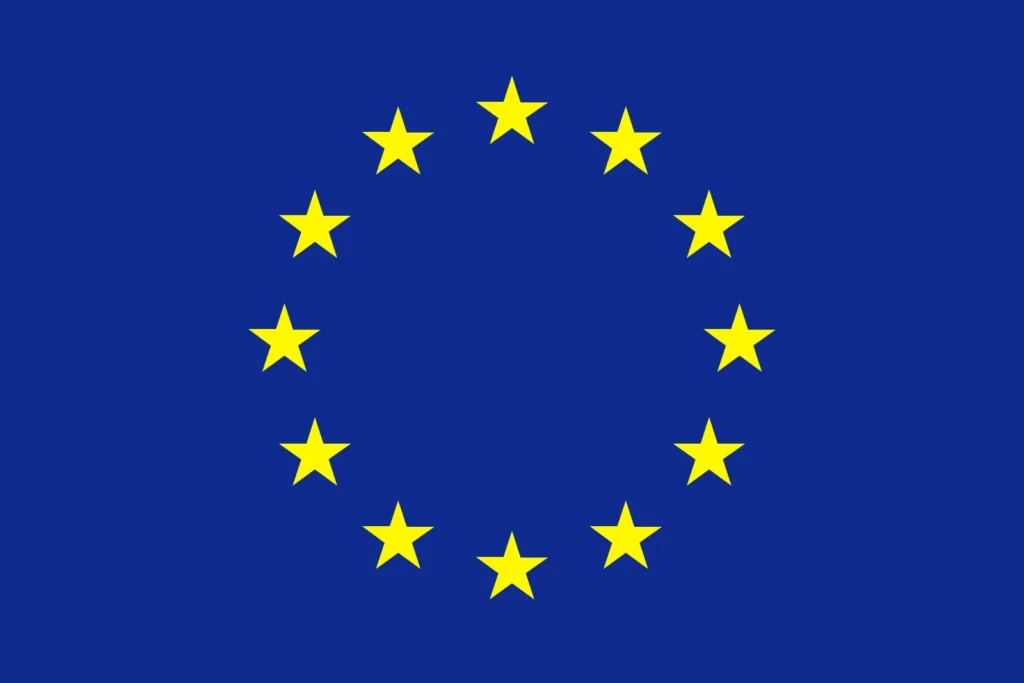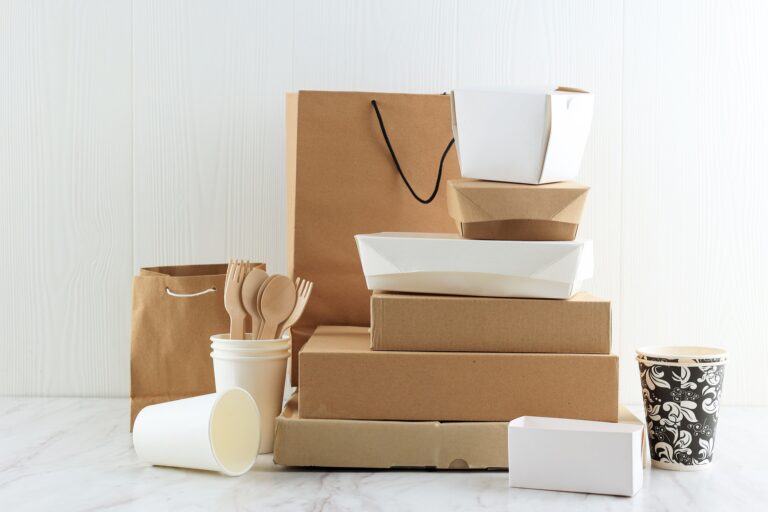In today’s eco-conscious world, more and more people are rethinking the materials they use in daily life. But when it comes to choosing between sustainable alternatives, the decision isn’t always clear-cut—Sugarcane vs Bamboo, which one is better? Whether you’re shopping for tableware, building materials, or packaging, both seem like eco-friendly options. Yet without a clear understanding of their differences, it’s easy to make the wrong choice.
Making the wrong choice can cost you more than just money—it can also mean shorter product lifespan and a larger environmental footprint. For example, you might assume bamboo is automatically more sustainable than sugarcane, overlooking critical factors like transportation emissions, energy use, and soil regeneration. Falling into this “greenwashing” trap may mean your good intentions do more harm than good.
To help cut through the confusion, we’ve created this comprehensive comparison guide that breaks down everything you need to know about Sugarcane vs Bamboo. Whether you’re a business sourcing raw materials or a conscious consumer aiming for a greener lifestyle, this guide will empower you to make smarter, more sustainable choices.
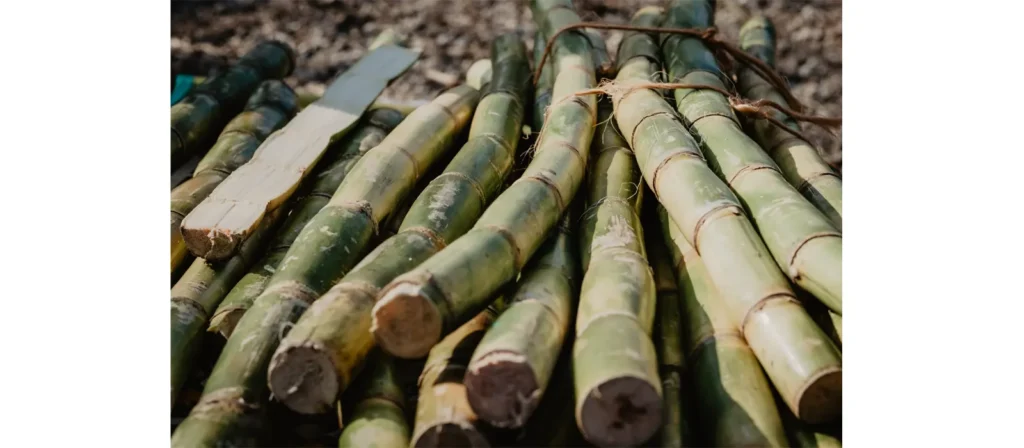
What is Sugarcane?
Sugarcane is a tall, perennial grass cultivated primarily in tropical and subtropical climates. It is most widely known for its juice, which is used to produce sugar and ethanol. After the juice is extracted, the leftover fibrous residue is called bagasse. This byproduct is now a valuable resource for eco-friendly packaging, bioenergy, and paper alternatives.
Advantages of Sugarcane
- Highly Renewable Resource: Sugarcane can be harvested multiple times a year in ideal climates, maturing in 12 to 18 months.
- Byproduct Utilization: Bagasse is essentially agricultural waste turned valuable, which means it reduces landfill and adds value to the sugar production process.
- Compostable & Biodegradable: Sugarcane products, especially packaging, decompose within 60–90 days in industrial composting settings.
- Low Material Cost: Since it is a byproduct, bagasse is inexpensive and widely available.
Disadvantages of Sugarcane
- Short-Term Use: Sugarcane bagasse products are typically not durable enough for long-term or heavy-duty applications.
- High Water Consumption: Growing sugarcane requires significant amounts of water, raising sustainability concerns in water-scarce regions.
- Chemical Use: Conventional sugarcane farming often involves the use of fertilizers and pesticides, which can lead to soil and water pollution.
- Limited Structural Integrity: Compared to bamboo, sugarcane fibers do not offer much tensile strength or resistance to impact.
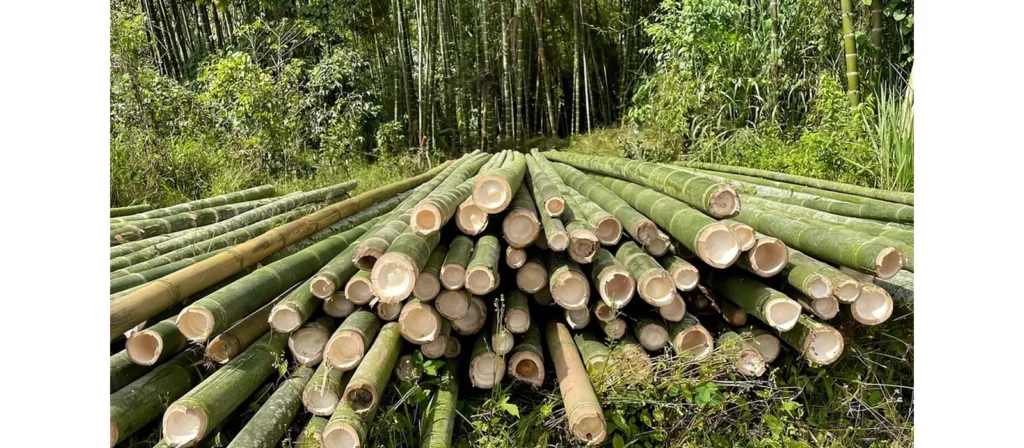
What is Bamboo?
Bamboo is a woody grass that grows abundantly across Asia, Africa, and parts of South America. Despite being classified as a grass, it has a complex root and cellular system that gives it the strength of hardwood. It is one of the fastest-growing plants on earth, with some species growing up to 91 cm in a single day.
Advantages of Bamboo
- Exceptional Strength: Bamboo is often referred to as “green steel” because of its remarkable tensile strength.
- Fast Growth: Some species mature in just 3 to 5 years, making it an extremely sustainable alternative to wood.
- Carbon Absorption: Bamboo absorbs more carbon dioxide and releases more oxygen compared to other plants of similar size.
- Versatile Applications: Used in flooring, furniture, Food Packaging, fabric, paper, and even as construction scaffolding.
- Low Maintenance Cultivation: Bamboo grows in poor soil conditions and typically requires no fertilizers or pesticides.
Disadvantages of Bamboo
- Processing Intensive: Raw bamboo needs to be treated and dried properly to prevent splitting and mold, increasing production time and cost.
- Heavier Weight: Compared to sugarcane-based materials, bamboo products are heavier, increasing transportation costs.
- Initial Cost: The production and treatment of bamboo products often make them more expensive upfront than sugarcane alternatives.
- Inconsistent Quality: The quality of bamboo products can vary significantly depending on species, origin, and processing methods.
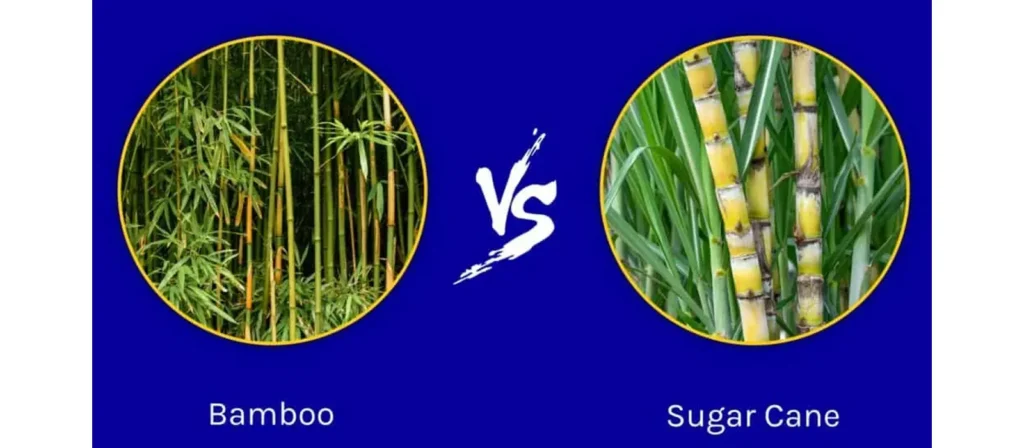
Key Differences Between Sugarcane and Bamboo
1. Growth and Sustainability
Bamboo outperforms sugarcane in terms of sustainability due to its faster growth rate, lower water and chemical requirements, and natural regeneration capabilities. While both are renewable, bamboo requires fewer resources and grows in more varied environments.
Sugarcane: Sugarcane typically matures within 12–18 months and often needs to be replanted after 3–4 harvests unless ratooning methods are employed. It demands fertile soil, a warm climate, and substantial irrigation or rainfall. Additionally, sugarcane farming often relies on chemical fertilizers and pesticides to maintain high yields, raising concerns over long-term soil health and ecosystem balance.
Bamboo: Bamboo matures in 3–5 years, but some species can grow up to 3 feet per day. Once established, it regenerates from the root system without needing to be replanted. It thrives in poor soils, requires minimal water, and rarely needs fertilizers or pesticides. This makes bamboo a low-maintenance and high-yield crop with a superior environmental profile.
2. Strength and Durability
While sugarcane is suitable for consumables and light industrial use, bamboo is a high-strength material suitable for structural and long-term applications, often rivaling steel in tensile strength.
Sugarcane:
The strength of sugarcane lies in its internal juice content rather than physical durability. Post-processing by-products like bagasse can be compressed into boards or biodegradable packaging, but these materials are not suited for load-bearing or long-term applications. Its fibrous nature is ideal for short-term, low-resistance products.
Bamboo:
Bamboo has an exceptionally high strength-to-weight ratio. With tensile strength greater than many hardwoods and even steel in some cases, bamboo is widely used in scaffolding, flooring, bridges, and furniture. Its natural flexibility adds to its resilience, making it ideal for construction in earthquake-prone regions.
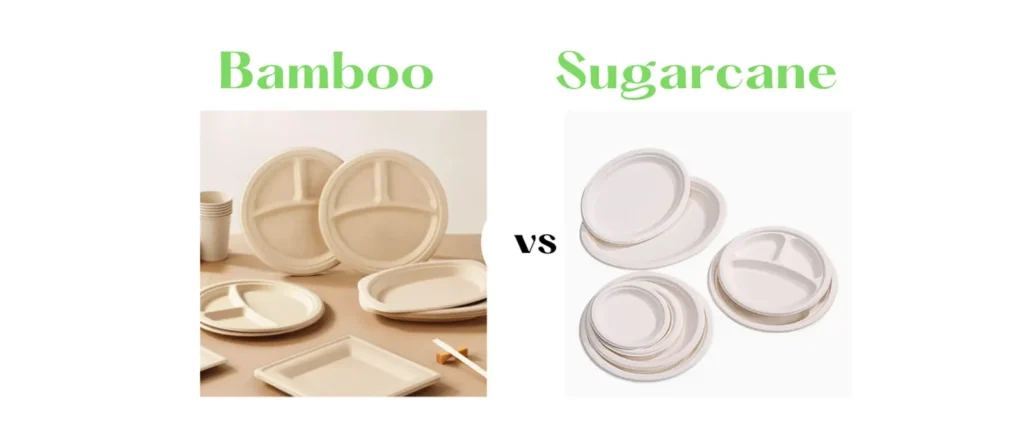
3. Carbon Emission and Absorption
Both sugarcane and bamboo help reduce carbon emissions through carbon sequestration. However, bamboo’s faster growth and lower processing emissions give it a stronger environmental edge.
Sugarcane:
Sugarcane contributes positively to carbon capture, especially through its use in ethanol production which offsets fossil fuel emissions. However, its water-intensive cultivation and heavy reliance on agrochemicals diminish its net environmental benefits, particularly when grown unsustainably.
Bamboo:
Bamboo absorbs more carbon dioxide per hectare than most commercial crops and trees. Its rapid growth cycle allows for more frequent harvesting without increasing emissions. Unlike sugarcane, bamboo’s carbon footprint is low due to minimal agricultural input and low energy requirements during cultivation.
4. Biodegradability and Compostability
Both materials are biodegradable and compostable, but bamboo offers more long-term usage before decomposing, whereas sugarcane-based products tend to be single-use with faster breakdown.
Sugarcane:
Sugarcane bagasse products decompose quickly under industrial composting conditions. These materials are ideal for disposable tableware and packaging, making them excellent for single-use items with a lower environmental impact compared to plastics.
Bamboo:
Bamboo products are naturally biodegradable and, in many cases, compostable in home environments. Due to their durability, they are commonly used for long-lasting goods like toothbrushes, utensils, and furniture. Once discarded, they decompose without releasing harmful toxins into the environment.
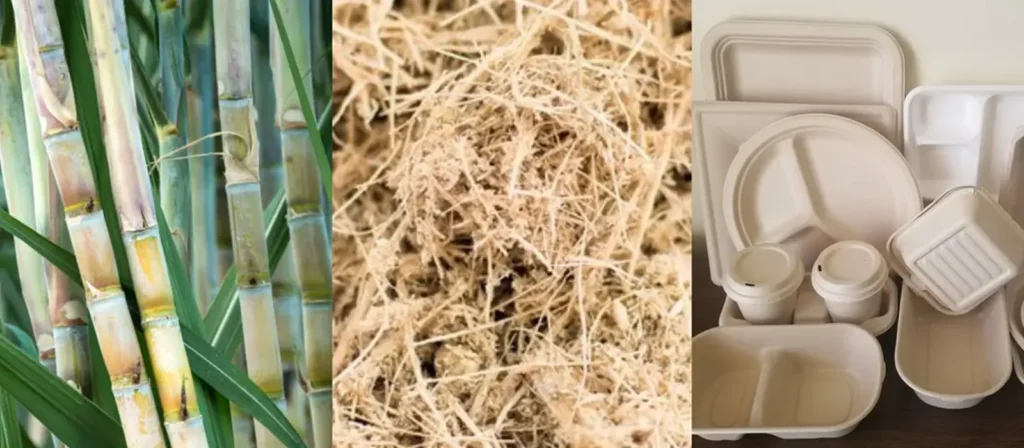
5. Product Applications and Versatility
Sugarcane is mainly used in food, packaging, and fuel. Bamboo is more versatile, spanning multiple industries including construction, textiles, home goods, and agriculture.
Sugarcane:
Sugarcane’s primary role is in sugar and ethanol production. Its fibrous residue, bagasse, is repurposed for bioenergy and biodegradable packaging. However, its applications are generally limited to consumables and energy-related uses.
Bamboo:
Bamboo serves a broader range of industries. From bamboo flooring and construction materials to bamboo fabrics, musical instruments, and even toilet paper, its versatility is unmatched. This wide usability not only increases its demand but also makes it a strategic material in the shift toward green manufacturing.
6. Cost
While sugarcane may appear cost-effective due to established supply chains and infrastructure, bamboo offers better long-term value due to durability, reusability, and growing demand in eco-conscious markets.
Sugarcane:
Initial investment in sugarcane is relatively low, especially in countries where infrastructure for processing sugar and ethanol already exists. However, recurring costs from irrigation, fertilizers, and replanting reduce profitability over time. Its short product lifespan also affects cost-efficiency in consumer applications.
Bamboo:
Bamboo has higher upfront processing costs, especially for treated or engineered products. However, the extended lifecycle, minimal input costs, and high consumer demand in eco-focused industries often result in a stronger return on investment. Its wide range of applications further spreads production costs across multiple sectors.
7. Water and Chemical Use
Bamboo significantly outperforms sugarcane in resource efficiency. It requires far less water and thrives without synthetic inputs, making it ideal for sustainable agriculture.
Sugarcane:
This crop is among the top consumers of agricultural water, often irrigated multiple times during its growth cycle. Chemical fertilizers and pesticides are widely used, raising environmental concerns regarding water pollution and soil degradation.
Bamboo:
Once established, bamboo can thrive on rainwater alone and rarely requires chemical inputs. Its root system helps retain moisture in the soil, reducing irrigation needs even further. This makes bamboo a highly resource-efficient crop suitable for regenerative agriculture.
Sugarcane vs Bamboo: Similarities
| Feature | Sugarcane | Bamboo |
|---|---|---|
| Renewable | Yes | Yes |
| Used in Sustainable Products | Yes (mostly packaging) | Yes (construction, textiles) |
| Fast Growing | Yes (12–18 months) | Yes (3–5 years or faster) |
| Compostable | Yes | Yes (in natural conditions) |
| Natural Appearance | Fibrous, beige texture | Woody, smooth or textured |
| Low Plastic Alternative | Yes | Yes |
| Eco-Friendly Reputation | Strong | Very Strong |
| Harvestable without Replanting | Yes | Yes (via rhizomes) |
Uses of Sugarcane and Bamboo
Both sugarcane and bamboo are renewable resources that have been creatively adapted for a variety of modern applications. While sugarcane is widely known for its juice and sweeteners, its by-products—especially bagasse—have found utility in eco-friendly packaging. Bamboo, on the other hand, offers far more versatile uses, serving industries ranging from construction to textiles and household goods.
Bagasse Products
Sugarcane bagasse, the fibrous pulp left after juice extraction, is an incredibly valuable material in sustainable production. It has become a popular substitute for polystyrene and plastic in the food service industry due to its compostable and lightweight nature.
Bagasse is molded into plates, bowls, containers, and cups—commonly seen in cafes, restaurants, and takeaway services seeking to reduce their plastic footprint. These products are typically heat-resistant, microwave-safe, and biodegradable within 60–90 days under commercial composting conditions.
Additionally, bagasse is also used in the paper and packaging industries to manufacture eco-friendly office paper, tissue, and box liners. Its versatility in disposable yet compostable items makes sugarcane a strong contender in the green packaging revolution.
Bamboo Products
Bamboo products span a wider spectrum, often lasting much longer than sugarcane-based alternatives. In packaging, bamboo is used to create reusable cutlery, food containers, straws, and gift boxes. These items are favored for their strength, elegant finish, and biodegradability.
Beyond packaging, bamboo is used in textiles (bamboo viscose fabric), construction (flooring, beams, scaffolding), personal care (toothbrushes, combs), and home décor. Bamboo’s strength and regenerative properties have made it a preferred material in design and sustainability-focused industries.
Its appeal lies in both aesthetics and function—combining durability with environmental integrity.
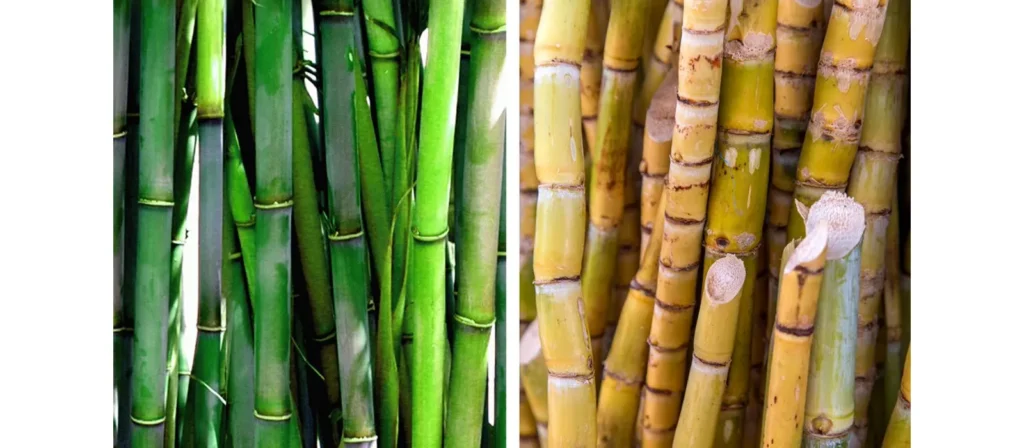
Environmental Impact of Sugarcane vs Bamboo Packaging
Resource Efficiency
Sugarcane:
While bagasse is technically a waste product, the sugarcane industry is extremely water- and input-intensive. Significant irrigation, fertilizers, and pesticides are required for cultivation. These factors reduce the overall efficiency of sugarcane as a sustainable raw material unless managed under strict environmental guidelines.
Bamboo:
Bamboo’s efficiency is far superior in most agricultural aspects. It grows rapidly with minimal water, requires no replanting, and thrives without chemical inputs. This makes bamboo ideal for land restoration and regenerative farming, allowing for high-yield output with low ecological impact.
Carbon Footprint
Sugarcane:
The production of sugarcane-based packaging emits greenhouse gases, especially in regions that rely on fossil fuels for harvesting and processing. However, its use in ethanol production helps offset emissions. Still, the balance between carbon sequestration and carbon release depends heavily on local farming practices and energy sources.
Bamboo:
Bamboo acts as a significant carbon sink. It absorbs more CO₂ than many tree species and contributes minimally to emissions due to low cultivation and harvesting energy demands. This gives bamboo-based packaging a lower carbon footprint over its entire lifecycle.
Production Consumption
Sugarcane:
Processing sugarcane into bagasse-based products requires extensive infrastructure and energy, especially when converting the fibrous residue into molded items. The industry benefits from scale but at a cost to energy efficiency.
Bamboo:
Though initial harvesting and treatment processes for bamboo can be labor-intensive, many products are handmade or produced in small-scale units using low-energy methods. This results in lower overall production energy consumption compared to sugarcane.
Recycling and Post-Use Disposal
Sugarcane:
Bagasse items decompose relatively quickly in industrial composting environments. However, they are not always compostable in backyard conditions. They are typically considered non-recyclable but are ideal for single-use, zero-waste systems.
Bamboo:
Bamboo products can be reused multiple times and are generally recyclable if not chemically treated. Once discarded, they break down naturally and return nutrients to the soil, especially in composting environments.
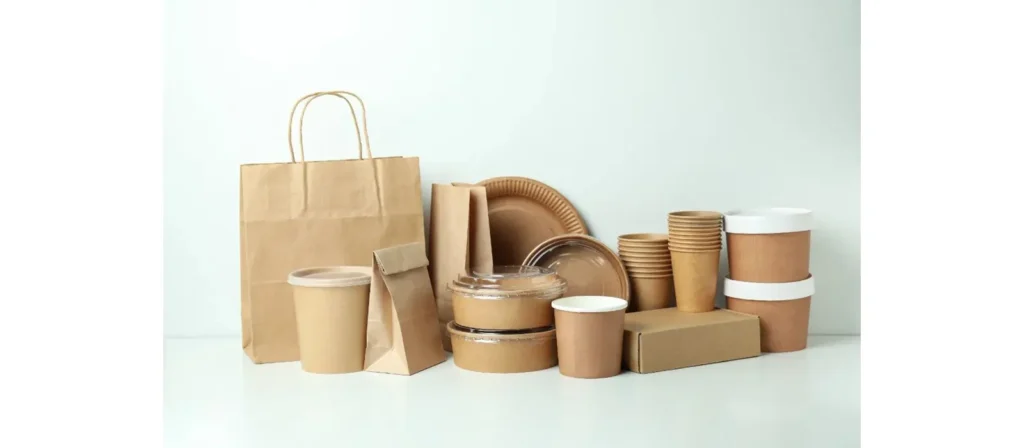
Sugarcane vs Bamboo Packaging: Make Informed Choices
Budget
When evaluating costs, sugarcane products are generally less expensive upfront, especially for single-use items. The global supply chain for sugarcane is well established, allowing manufacturers to produce bagasse packaging at scale.
Bamboo products, although slightly more expensive, offer longer lifespans and better reusability. Businesses aiming for a reusable model may find bamboo to be more cost-effective in the long term.
Purpose and Application
For fast-moving food and beverage services requiring disposable yet eco-friendly solutions, sugarcane is a practical and economical choice. It offers compostable functionality with decent durability for one-time use.
In contrast, bamboo is better suited for premium products, reusable utensils, gift packaging, or items where aesthetics and sturdiness matter. It adds value to brands looking to highlight craftsmanship and sustainability.
Environmental Impact
Bamboo typically wins in all key environmental metrics: water usage, carbon capture, energy efficiency, and regenerative growth. Sugarcane, while still a better alternative than plastic, must be cultivated and processed responsibly to maintain its green credentials.
Organizations with strong environmental commitments should evaluate lifecycle analyses when choosing between the two.
Consumer Preferences
Consumer awareness of environmental issues has shifted drastically. Many now associate bamboo with minimalism, elegance, and eco-consciousness. Reusable bamboo products have become a lifestyle statement in sustainable living.
Sugarcane packaging appeals more to mass-market convenience and food service applications. While not as trendy as bamboo, it remains a respected alternative to plastics in packaging.
The Future of Sustainable Packaging
As the urgency to replace plastic intensifies, both sugarcane and bamboo are playing pivotal roles in redefining packaging norms. Governments are enforcing stricter bans on non-recyclable materials, and companies are under pressure to prove sustainability at every touchpoint.
Innovation will be key. Scientists are exploring blends of sugarcane bagasse and bamboo fibers to create hybrid materials that combine the flexibility of bagasse with the strength of bamboo. There is also research into improving the compostability of bamboo packaging to meet home composting standards.
Furthermore, circular economy models are beginning to adopt bamboo as a cornerstone material—due to its strength, renewability, and zero-waste potential. Sugarcane will likely continue to dominate biofuel and disposable product markets but may evolve toward higher-grade applications with improved production practices.
Ultimately, the future belongs to materials that can scale efficiently, biodegrade completely, and support regenerative agriculture. Sugarcane and bamboo each contribute to this vision in their own way.

